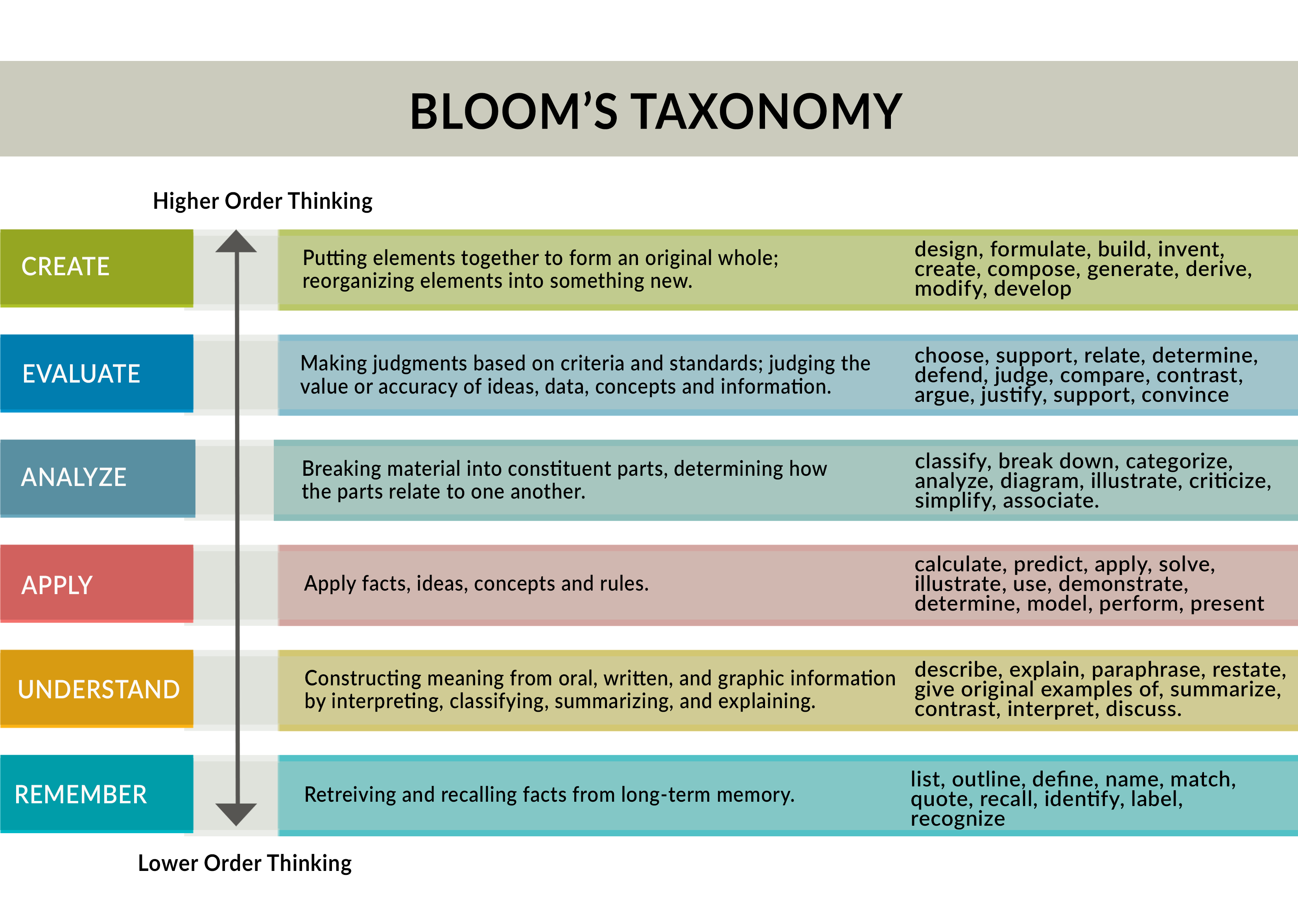
Understand the updated Bloom’s Taxonomy
The updated version of Bloom’s Taxonomy (2001) provides a unique framework for designing course content and illustrates the cognitive skills and general types of knowledge that instructors should target when developing learning activities and assessments.
In Bloom’s revised framework, skills are classified on a continuum of increasing cognitive complexity and include remembering, understanding, applying, analyzing, evaluating, and creating. Skills relevant to creating, evaluating, and analyzing require students to develop a deeper understanding of content, successfully integrate prior knowledge with new information, and categorize ideas as well as generate original ideas. In contrast, skills relevant to remembering, understanding, and applying, develop the building blocks for the foundational knowledge students eventually use in more complex tasks. Accompanying the list of Bloom’s cognitive skills on the chart below are examples of action verbs that can be helpful when writing learning objectives targeting each specific cognitive skill needed to complete the activities and assessments an instructor develops for a course.
When developing course content using Bloom’s Taxonomy as a tool, it can be helpful to work backward from the instructional outcomes that will be required of students, and then write course objectives using the verbs associated with the appropriate cognitive skills needed to complete assessments and activities. A well-designed course will include a mix of assessments and activities that draw on a range of cognitive skills. Using this Backward Design method can help instructors develop learning objectives that help focus students on the desired outcomes as well as provide more direction for students who will eventually need to show the instructor what they have learned. Paired with a rubric for an assessment, course learning objectives that use words aligned with specific cognitive skills can provide important guidance to improve outcomes.

In addition to the six core cognitive skills in the revised Bloom’s Taxonomy, skills can also be viewed using one of four knowledge dimensions: factual, conceptual, procedural, and metacognitive knowledge. These four knowledge dimensions of each skill allow a deeper dive into course content, giving the instructor another tool with which to analyze course learning.
References
Anderson, L.W. (Ed.) & Krathwohl, D.R. (Ed.), Airasian, P.W., Cruikshank, K.A., Mayer, R.E., Pintrich, P.R., Raths, J., & Wittrock, M.C. (2001). A taxonomy for learning, teaching, and assessing: A revision of Bloom’s Taxonomy of Educational Objectives. New York: Longman.

